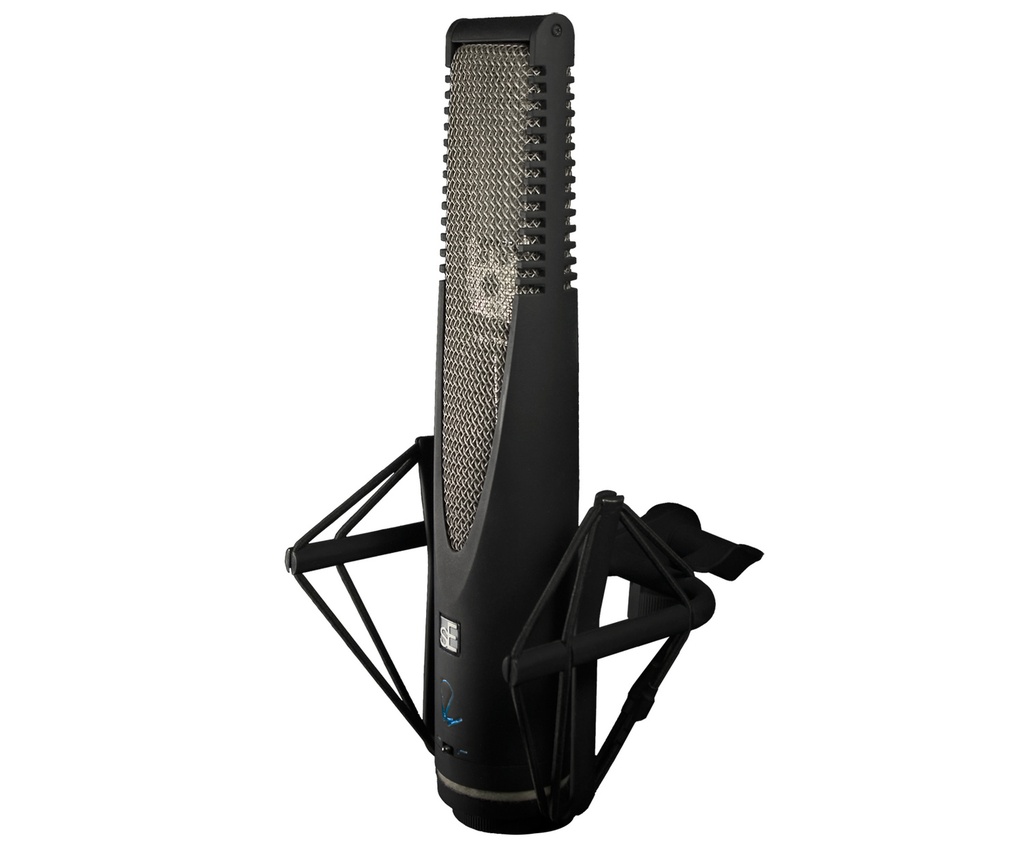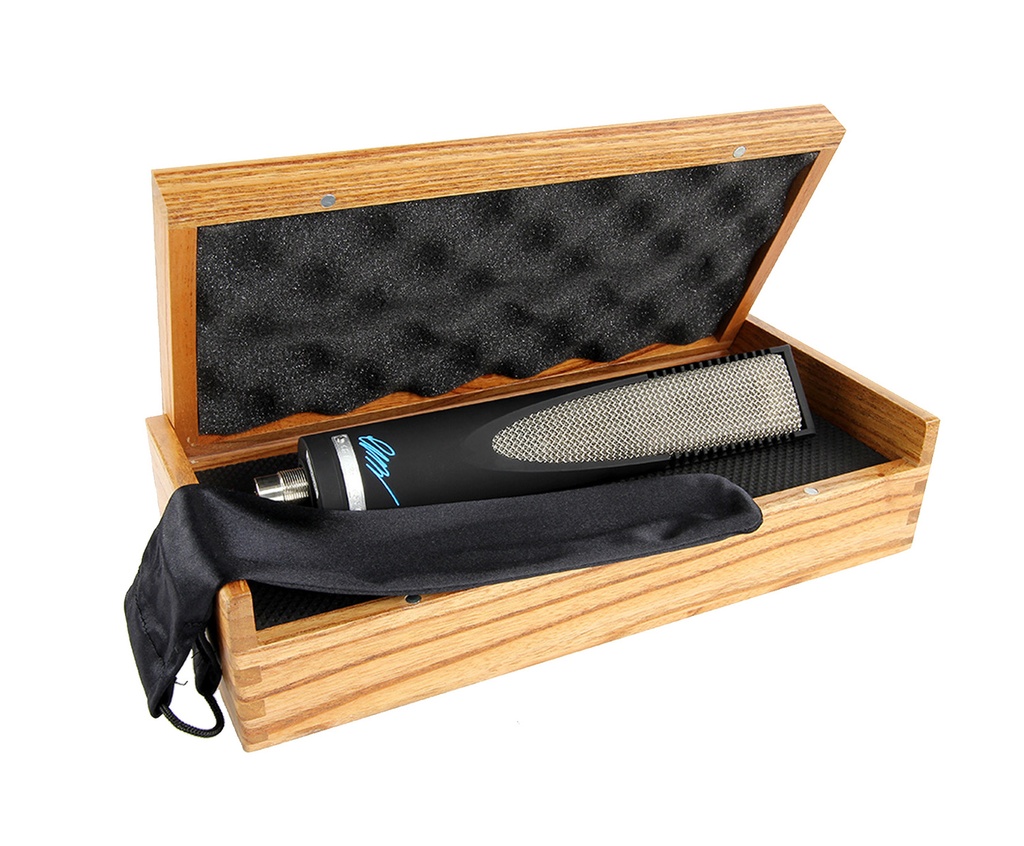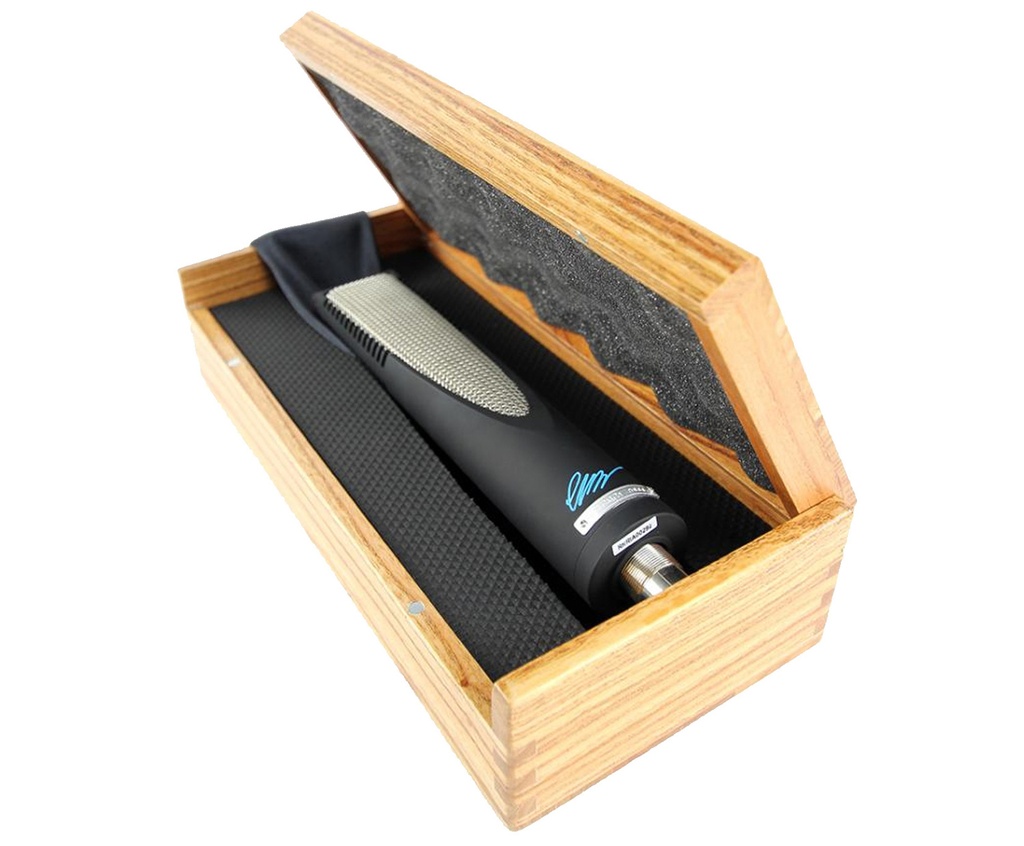 sE Electronics
sE Electronics
RNR-1
Rupert Neve Signature Series ribbon microphone
Meet the RNR1 - the world's first mic from Mr. Rupert Neve.
With custom transformers and discrete circuitry from the man behind the recording industry as we know it, the RNR1 hears more than any other ribbon on the planet. Ribbon mics have been around for a long time, and have always been particularly prized for the exceptionally "natural" sound they provide. Not too forward, never bright or shiny, they capture midrange detail with a pleasant intimacy and usually sit quite easily in a mix.
One downside of their mellow nature used to be physical delicacy, but that challenge was conquered long ago with more rugged, reliable materials. But the other main negative with ribbon mics is the high-frequency roll-off inherent in their design, which had never been dealt with until Rupert Neve - the father of the recording console - decided to make a microphone.
Nobody knows audio transformers better than Rupert Neve, and ribbon mics require more transformer attention than any other. This is because the transformer that couples the ribbon to the output needs to accomplish a fairly massive impedance conversion.
With the RNR1, two custom Rupert Neve-designed transformers form the buffer between the ribbon and the outside world. The circuitry between those transformers helps maintain the ultra-wide frequency response, compensating for the ribbon's natural predisposition to roll it off, and thus high-frequency content is preserved.
During the RNR1's development, a full year was spent working on crafting a ribbon element that would provide the extended response that Mr. Neve demanded.
After experimenting with ribbon materials available from all corners of the world, the design team landed on the 2.5µm aluminum ribbon used in the RNR1, striking the perfect balance of flexibility and stiffness needed for this microphone's exceptional performance.
As with many sE microphones, the RNR1 has an unusual and bold design aesthetic, with the form following the function.
The precision-machined and scalloped edges don't just look vibrant and dramatic, they have also been custom-designed to provide the ribbon with an acoustically ideal setting for the best possible frequency response. The matte black finish means the mic remains unobtrusive and doesn't draw any unnecessary attention to itself under harsh stage or studio lighting.
The RNR1 includes a custom-designed and easy-to-use shock mount, which is essential in use to reduce the unwanted effects of vibration or knocks to the supporting microphone stand.
With custom transformers and discrete circuitry from the man behind the recording industry as we know it, the RNR1 hears more than any other ribbon on the planet. Ribbon mics have been around for a long time, and have always been particularly prized for the exceptionally "natural" sound they provide. Not too forward, never bright or shiny, they capture midrange detail with a pleasant intimacy and usually sit quite easily in a mix.
One downside of their mellow nature used to be physical delicacy, but that challenge was conquered long ago with more rugged, reliable materials. But the other main negative with ribbon mics is the high-frequency roll-off inherent in their design, which had never been dealt with until Rupert Neve - the father of the recording console - decided to make a microphone.
Nobody knows audio transformers better than Rupert Neve, and ribbon mics require more transformer attention than any other. This is because the transformer that couples the ribbon to the output needs to accomplish a fairly massive impedance conversion.
With the RNR1, two custom Rupert Neve-designed transformers form the buffer between the ribbon and the outside world. The circuitry between those transformers helps maintain the ultra-wide frequency response, compensating for the ribbon's natural predisposition to roll it off, and thus high-frequency content is preserved.
During the RNR1's development, a full year was spent working on crafting a ribbon element that would provide the extended response that Mr. Neve demanded.
After experimenting with ribbon materials available from all corners of the world, the design team landed on the 2.5µm aluminum ribbon used in the RNR1, striking the perfect balance of flexibility and stiffness needed for this microphone's exceptional performance.
As with many sE microphones, the RNR1 has an unusual and bold design aesthetic, with the form following the function.
The precision-machined and scalloped edges don't just look vibrant and dramatic, they have also been custom-designed to provide the ribbon with an acoustically ideal setting for the best possible frequency response. The matte black finish means the mic remains unobtrusive and doesn't draw any unnecessary attention to itself under harsh stage or studio lighting.
The RNR1 includes a custom-designed and easy-to-use shock mount, which is essential in use to reduce the unwanted effects of vibration or knocks to the supporting microphone stand.
Meet the RNR1 - the world's first mic from Mr. Rupert Neve.
With custom transformers and discrete circuitry from the man behind the recording industry as we know it, the RNR1 hears more than any other ribbon on the planet. Ribbon mics have been around for a long time, and have always been particularly prized for the exceptionally "natural" sound they provide. Not too forward, never bright or shiny, they capture midrange detail with a pleasant intimacy and usually sit quite easily in a mix.
One downside of their mellow nature used to be physical delicacy, but that challenge was conquered long ago with more rugged, reliable materials. But the other main negative with ribbon mics is the high-frequency roll-off inherent in their design, which had never been dealt with until Rupert Neve - the father of the recording console - decided to make a microphone.
Nobody knows audio transformers better than Rupert Neve, and ribbon mics require more transformer attention than any other. This is because the transformer that couples the ribbon to the output needs to accomplish a fairly massive impedance conversion.
With the RNR1, two custom Rupert Neve-designed transformers form the buffer between the ribbon and the outside world. The circuitry between those transformers helps maintain the ultra-wide frequency response, compensating for the ribbon's natural predisposition to roll it off, and thus high-frequency content is preserved.
During the RNR1's development, a full year was spent working on crafting a ribbon element that would provide the extended response that Mr. Neve demanded.
After experimenting with ribbon materials available from all corners of the world, the design team landed on the 2.5µm aluminum ribbon used in the RNR1, striking the perfect balance of flexibility and stiffness needed for this microphone's exceptional performance.
As with many sE microphones, the RNR1 has an unusual and bold design aesthetic, with the form following the function.
The precision-machined and scalloped edges don't just look vibrant and dramatic, they have also been custom-designed to provide the ribbon with an acoustically ideal setting for the best possible frequency response. The matte black finish means the mic remains unobtrusive and doesn't draw any unnecessary attention to itself under harsh stage or studio lighting.
The RNR1 includes a custom-designed and easy-to-use shock mount, which is essential in use to reduce the unwanted effects of vibration or knocks to the supporting microphone stand.
With custom transformers and discrete circuitry from the man behind the recording industry as we know it, the RNR1 hears more than any other ribbon on the planet. Ribbon mics have been around for a long time, and have always been particularly prized for the exceptionally "natural" sound they provide. Not too forward, never bright or shiny, they capture midrange detail with a pleasant intimacy and usually sit quite easily in a mix.
One downside of their mellow nature used to be physical delicacy, but that challenge was conquered long ago with more rugged, reliable materials. But the other main negative with ribbon mics is the high-frequency roll-off inherent in their design, which had never been dealt with until Rupert Neve - the father of the recording console - decided to make a microphone.
Nobody knows audio transformers better than Rupert Neve, and ribbon mics require more transformer attention than any other. This is because the transformer that couples the ribbon to the output needs to accomplish a fairly massive impedance conversion.
With the RNR1, two custom Rupert Neve-designed transformers form the buffer between the ribbon and the outside world. The circuitry between those transformers helps maintain the ultra-wide frequency response, compensating for the ribbon's natural predisposition to roll it off, and thus high-frequency content is preserved.
During the RNR1's development, a full year was spent working on crafting a ribbon element that would provide the extended response that Mr. Neve demanded.
After experimenting with ribbon materials available from all corners of the world, the design team landed on the 2.5µm aluminum ribbon used in the RNR1, striking the perfect balance of flexibility and stiffness needed for this microphone's exceptional performance.
As with many sE microphones, the RNR1 has an unusual and bold design aesthetic, with the form following the function.
The precision-machined and scalloped edges don't just look vibrant and dramatic, they have also been custom-designed to provide the ribbon with an acoustically ideal setting for the best possible frequency response. The matte black finish means the mic remains unobtrusive and doesn't draw any unnecessary attention to itself under harsh stage or studio lighting.
The RNR1 includes a custom-designed and easy-to-use shock mount, which is essential in use to reduce the unwanted effects of vibration or knocks to the supporting microphone stand.
Ihr dynamisches Snippet wird hier angezeigt ...
Diese Meldung wird angezeigt, weil Sie weder einen Filter noch eine Vorlage zur Verwendung bereitgestellt haben.







